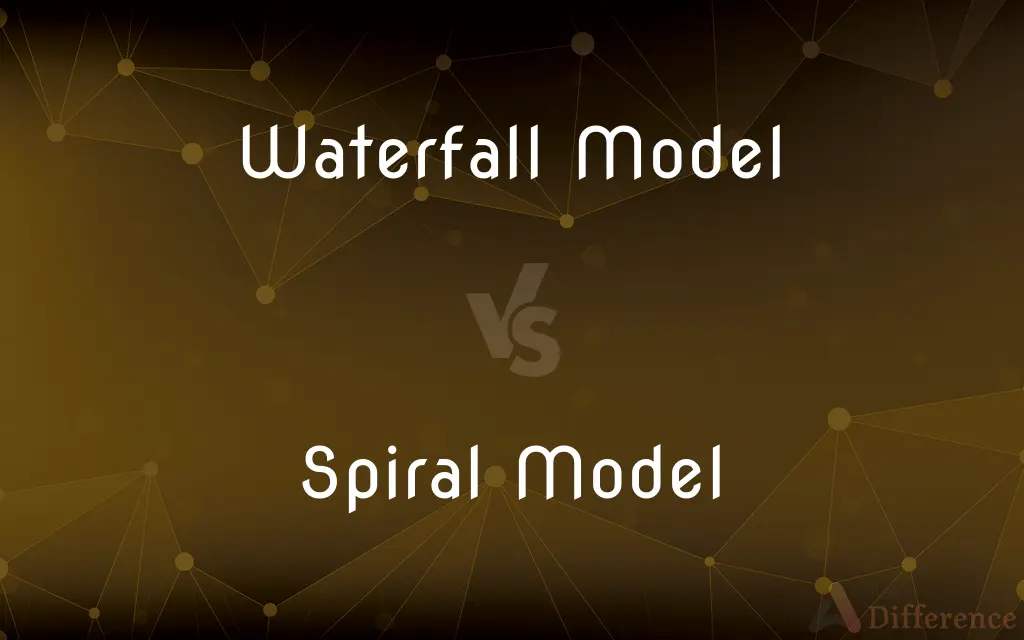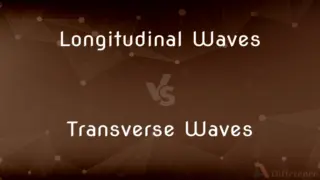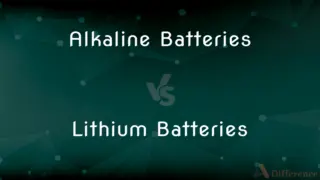Waterfall Model vs. Spiral Model — What's the Difference?
By Tayyaba Rehman — Published on January 6, 2024
Waterfall Model follows a linear, sequential approach in software development, while Spiral Model incorporates iterative cycles allowing for continuous refinement and risk mitigation.

Difference Between Waterfall Model and Spiral Model
Table of Contents
ADVERTISEMENT
Key Differences
Waterfall Model adopts a linear approach with distinct phases: requirements, design, implementation, testing, and maintenance, ideal for projects with well-defined goals upfront. Spiral Model integrates iterations, each revisiting planning, risk analysis, engineering, and evaluation, suitable for complex projects needing continuous enhancements.
In Waterfall Model, each phase progresses one after the other without revisiting earlier stages, making it rigid but straightforward for simpler projects with fixed requirements. Spiral Model, on the other hand, repeats cycles, allowing flexibility and adaptation to changes or uncertainties in requirements throughout the development process.
Waterfall Model's rigid structure makes it less adaptable to changes once a phase is completed, suitable for projects where requirements are stable. Spiral Model's iterative nature allows for flexibility, accommodating changes and addressing risks throughout the project, ideal for evolving or complex projects.
Waterfall Model offers clear milestones for each phase, making it easier to manage and understand project progress. Spiral Model's iterative cycles enable continual evaluation, refining the product with each iteration, suitable for projects requiring constant improvements.
Waterfall Model relies on extensive upfront planning and documentation, making it more suitable for projects with well-understood requirements and minimal changes expected during development. Spiral Model encourages risk assessment and adaptation, making it suitable for projects where requirements evolve or have uncertainties.
ADVERTISEMENT
Comparison Chart
Approach
Linear, sequential phases
Iterative cycles with continuous refinement
Iteration
No iterations, distinct phases progression
Iterative cycles revisiting planning and risk assessment
Adaptability
Less adaptable to changes once a phase is completed
Flexible, accommodates changes throughout development
Ideal Project Types
Well-defined projects with stable requirements
Evolving or complex projects with uncertainties
Planning and Flexibility
Extensive upfront planning, less adaptable to changes
Emphasizes risk assessment, adaptable to evolving needs
Compare with Definitions
Waterfall Model
Linear software development approach with distinct phases.
The Waterfall Model proceeds sequentially through project stages.
Spiral Model
Iterative development with continuous cycles.
The Spiral Model revisits stages for continuous refinement.
Waterfall Model
Minimal iteration, each phase completed before moving to the next.
The Waterfall Model suits projects with fixed requirements.
Spiral Model
Ideal for complex projects needing flexibility.
The Spiral Model handles uncertainties with its iterative nature.
Waterfall Model
Requires extensive planning and documentation at each stage.
Waterfall Model demands thorough planning before implementation.
Spiral Model
Continuous evaluation and refinement in iterative cycles.
Spiral Model ensures continual improvements with each iteration.
Waterfall Model
Rigid structure progressing from requirements to maintenance.
In the Waterfall Model, each phase builds on the previous one.
Spiral Model
Emphasizes risk assessment and mitigation throughout.
Spiral Model focuses on identifying and managing risks.
Waterfall Model
Ideal for projects with well-understood goals upfront.
The Waterfall Model is efficient for projects with stable requirements.
Spiral Model
Adaptable approach accommodating changes in requirements.
Spiral Model suits projects with evolving requirements.
Common Curiosities
Is the Waterfall Model suitable for projects with evolving requirements?
Not ideally, as the Waterfall Model's rigid structure makes it challenging to accommodate changes once a phase is completed.
Is the Waterfall Model suitable for projects with well-defined requirements?
Yes, the Waterfall Model is efficient for projects with clear and stable requirements upfront, progressing through distinct phases.
What is the primary advantage of the Spiral Model?
The Spiral Model's iterative nature allows for continuous refinement and adaptation, addressing uncertainties throughout the project.
Can the Spiral Model accommodate changes during development?
Yes, the Spiral Model's iterative cycles allow for adjustments and adaptations to changing requirements throughout the project.
What challenges does the Waterfall Model pose?
The Waterfall Model's rigidity can make it challenging to incorporate changes once a phase is completed, especially if requirements shift.
Does the Waterfall Model support revisiting earlier stages?
No, the Waterfall Model progresses linearly, and once a phase is completed, there's no revisiting of earlier stages.
Does the Spiral Model require extensive planning at the outset?
The Spiral Model involves planning and risk assessment in each cycle, requiring ongoing evaluation and adaptation rather than extensive upfront planning.
Can the Spiral Model control project costs effectively?
Yes, by emphasizing risk assessment and early problem identification, the Spiral Model helps in cost-effective project management.
Can the Waterfall Model adapt to changing client needs?
Not efficiently, as the Waterfall Model's structure lacks flexibility once a phase is completed, making it less responsive to changing needs.
How does the Waterfall Model handle project milestones?
The Waterfall Model has clear and defined milestones at the end of each phase, making project progress easier to track.
Can phases overlap in the Waterfall Model?
No, the Waterfall Model progresses linearly, with each phase completed before moving to the next, preventing overlapping stages.
How does the Spiral Model handle risk management?
The Spiral Model emphasizes risk assessment in each cycle, allowing for risk mitigation strategies throughout the project.
How does the Spiral Model handle project complexity?
The Spiral Model's iterative approach makes it suitable for handling complex projects by accommodating changes and uncertainties.
Can the Spiral Model be used for short-term projects?
While applicable, the Spiral Model's strength lies in handling complex, long-term projects where continuous refinement is necessary.
Can the Waterfall Model handle uncertainty during development?
Not as effectively, as the Waterfall Model's linear approach lacks the flexibility needed to accommodate uncertainties that may arise during development.
Share Your Discovery

Previous Comparison
Longitudinal Waves vs. Transverse Waves
Next Comparison
Alkaline Batteries vs. Lithium BatteriesAuthor Spotlight
Written by
Tayyaba RehmanTayyaba Rehman is a distinguished writer, currently serving as a primary contributor to askdifference.com. As a researcher in semantics and etymology, Tayyaba's passion for the complexity of languages and their distinctions has found a perfect home on the platform. Tayyaba delves into the intricacies of language, distinguishing between commonly confused words and phrases, thereby providing clarity for readers worldwide.













































